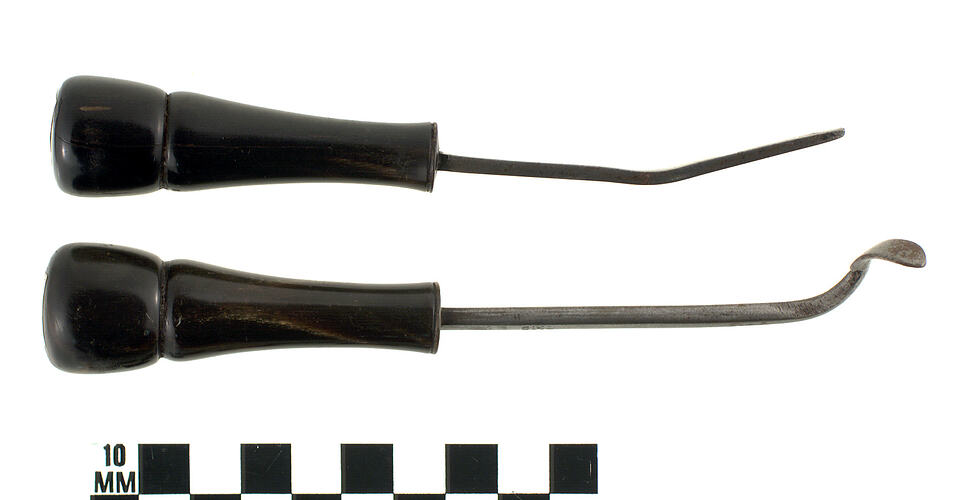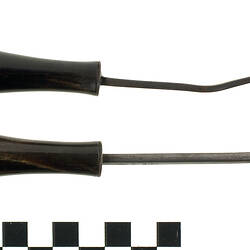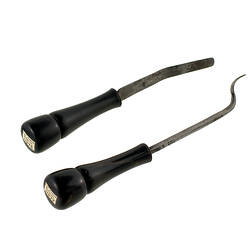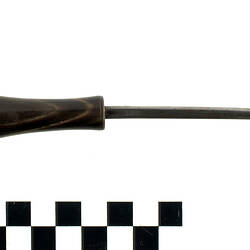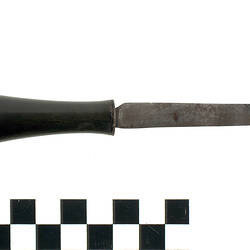Summary
Two opium spatulas with horn handles, circa 1900s-1930s. Opium use was widespread in China between the 17th and 19th Centuries with the British East India Company importing large quantities of the drug. Chinese attempts to ban the opium trade and resistance against the foreign intervention it represented culminated in the Opium Wars of the early to mid-19th Century when force of arms ensured that Chinese ports remained open to opium.
Opium smoking followed Chinese migrants overseas, with the activity providing a means of relaxation and social interaction for a largely male community, who were often ostracised from the wider community. In 1867, a census of Chinese settlements in regional Victoria recorded at least 80 opium shops in 9 centres across regional Victoria. Opium smoking was legal in Victoria until 1905, although prior to this those who failed to pay import duties risked having supplies of opium confiscated.
Physical Description
There are two opium spatulas of slightly differing blade shape. Both have cylindrical handles of carved and polished brown horn and blades of inserted into the handles. The longer spatula has a tip which is curved and flattened to form a scoop and Chinese characters cast into the blade. The other spatula has a flattened blade which is of greater thickness along one side and shows a bend half way along its length.
More Information
-
Collecting Areas
-
Acquisition Information
Transfer from National Gallery of Victoria (NGV), Felton Bequest, 27 Mar 1940
-
Place & Date Used
Victoria, Australia, circa 1900s-1930s
Possible -
Classification
Recreation & tourism, Substance use - opiates, Preparation equipment
-
Category
-
Discipline
-
Type of item
-
Dimensions
165 mm (Length), 23 mm (Outside Diameter)
Measurement From Conservation. Measuring Method: Max. dimensions of spatula (#114)
-
Keywords
